Sensor Sweep: Planetary Romance, Frank Frazetta, D&D Fifty Years
Monday , 8, January 2024 Sensor Sweep Leave a comment Robert E. Howard (Sprague de Camp Fan): There is a scene in the Robert E. Howard biopic, The Whole Wide World, where Novalyne Price discovers REH carries a gun in his car. REH justifies its presence saying that this is dangerous country. ”Outlaws, vagrants, they’re all here.”
Robert E. Howard (Sprague de Camp Fan): There is a scene in the Robert E. Howard biopic, The Whole Wide World, where Novalyne Price discovers REH carries a gun in his car. REH justifies its presence saying that this is dangerous country. ”Outlaws, vagrants, they’re all here.”
 Star Wars (Fandom Pulse): The Star Wars universe is facing a new challenge as discussions about a second season of “Ahsoka” seem to be non-existent, according to actress Rosario Dawson. The news comes after a lackluster performance in both ratings and audience reception. The fate of the beloved character and the future of Disney’s Star Wars are hanging in the balance.
Star Wars (Fandom Pulse): The Star Wars universe is facing a new challenge as discussions about a second season of “Ahsoka” seem to be non-existent, according to actress Rosario Dawson. The news comes after a lackluster performance in both ratings and audience reception. The fate of the beloved character and the future of Disney’s Star Wars are hanging in the balance.
Conflict (Special Ops): The Battle of Marawi stands as the most extensive urban conflict in the history of the Philippines, also recognized as the Siege of Marawi and the Marawi Crisis. Commencing on May 23, 2017, and concluding on October 23, 2017, the battle marked a significant chapter in the nation’s history. Following the successful five-month-long campaign to reclaim Marawi.
urban conflict in the history of the Philippines, also recognized as the Siege of Marawi and the Marawi Crisis. Commencing on May 23, 2017, and concluding on October 23, 2017, the battle marked a significant chapter in the nation’s history. Following the successful five-month-long campaign to reclaim Marawi.
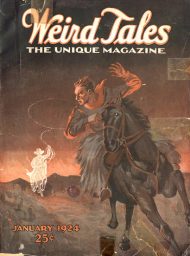 Weird Tales (Tellers of Weird Tales): A century ago, in January 1924, Weird Tales was still in its first year of publication. The magazine had begun in March 1923. There were issues published in almost every month following that one, from April 1923 to May/June/July 1924. There were two exceptions: one, a bimonthly issue of July/August 1923, the other, no issue at all in December 1923. That makes thirteen issues in all in the first year and more of “The Unique Magazine.” Unlucky thirteen.
Weird Tales (Tellers of Weird Tales): A century ago, in January 1924, Weird Tales was still in its first year of publication. The magazine had begun in March 1923. There were issues published in almost every month following that one, from April 1923 to May/June/July 1924. There were two exceptions: one, a bimonthly issue of July/August 1923, the other, no issue at all in December 1923. That makes thirteen issues in all in the first year and more of “The Unique Magazine.” Unlucky thirteen.
Publishing (Wasteland & Sky): Back in 1971, the Gold Eagle line was born. Harlequin created it after the huge success of The Executioner books by Don Pendleton and wanted more of it. Ostensibly a men’s adventure line of books, Gold Eagle existed to cultivate males in the same way Harlequin had so clearly captured females with their own books. Such a move made sense, who wouldn’t want both halves of a demographic, after all. And it ended up being a great success.
Robert E. Howard (Paperback Warrior): Robert E. Howard’s Conan short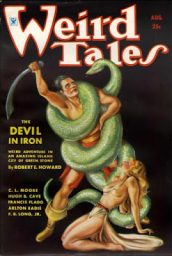 “The Devil in Iron” first appeared in the August 1934 issue of Weird Tales. It was later reprinted in paperback by Lancer in 1968 as a part of the Conan the Wanderer collection, later reprinted by Ace with a cover painted by Boris Vallejo. The story was adapted into comic form in the October 1976 issue of The Savage Sword of Conan the Barbarian with a cover also painted by Vallejo.
“The Devil in Iron” first appeared in the August 1934 issue of Weird Tales. It was later reprinted in paperback by Lancer in 1968 as a part of the Conan the Wanderer collection, later reprinted by Ace with a cover painted by Boris Vallejo. The story was adapted into comic form in the October 1976 issue of The Savage Sword of Conan the Barbarian with a cover also painted by Vallejo.
Tolkien (Grognardia): Today marks the 132nd anniversary of the birth of J.R.R. Tolkien. I don’t think it’s an exaggeration to say that Tolkien is almost certainly the single most important creator for the subsequent development of the fantasy genre as it has come to be widely understood – no small feat for an Oxford don specializing in Anglo-Saxon language and literature!
Cinema (Crime Reads): Cornell Woolrich published Black Alibi in 1942. His tenth book overall, it was the third in his series of “Black” novels. The Bride Wore Black (1940), later adapted into a film by Francois Truffaut, led the sequence off, succeeded by The Black Curtain (1941), The Black Angel (1943), The Black Path of Fear (1944), and Rendezvous in Black (1948). None of the six books has a continuity with any of the others, but each in different ways mines the dark psychological territory a reader expects from Woolrich.
tenth book overall, it was the third in his series of “Black” novels. The Bride Wore Black (1940), later adapted into a film by Francois Truffaut, led the sequence off, succeeded by The Black Curtain (1941), The Black Angel (1943), The Black Path of Fear (1944), and Rendezvous in Black (1948). None of the six books has a continuity with any of the others, but each in different ways mines the dark psychological territory a reader expects from Woolrich.
Tolkien (Imaginative Conservative): The last story Tolkien published prior to his death, “Smith of Wootton Major,” follows a normal but charitably inclined man who has been graced with the ability to make extraordinarily beautiful things while metal smithing. Smith, as he is known, discovered the gift of grace on his tenth birthday, when the dawn engulfed him and “passed on like a wave of music into the West, as the sun rose above the rim of the world.”[2] Like the earth at the end of Eliot’s “Wasteland,” Tolkien’s Smith had been baptized, and through this gift he receives an invitation to faerie.
Frazetta (Mental Floss): In 1966, Frank Frazetta, a successful freelance illustrator, was hired by paperback publisher Lancer Books to render a cover for a collection of fantasy stories by Robert E. Howard. The star was Conan, a brutal warrior from Cimmeria who encounters all manner of beasts and black magic—problems he typically solves with a stroke of his sword.
Fiction (Review Geek): Planetary romance is a subgenre of science fiction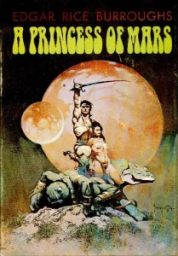 that transports readers to captivating worlds beyond our own. Filled with grand adventures, epic landscapes, and exotic cultures, these stories take readers on thrilling journeys across alien planets. In this article, we will unveil the ten best otherworldly romance books that will ignite your imagination and transport you to worlds beyond your wildest dreams.
that transports readers to captivating worlds beyond our own. Filled with grand adventures, epic landscapes, and exotic cultures, these stories take readers on thrilling journeys across alien planets. In this article, we will unveil the ten best otherworldly romance books that will ignite your imagination and transport you to worlds beyond your wildest dreams.
 Cinema (Mental Floss): Dragons. Giant beasts sliced in half. Class warfare within the confines of a giant castle. In the mythology of fantasy icon Conan the Barbarian, “Red Nails” has a little bit of everything. The short story, originally published in Weird Tales magazine in 1936, was also the last Conan story that creator Robert E. Howard ever wrote—he died by suicide shortly after completing it.
Cinema (Mental Floss): Dragons. Giant beasts sliced in half. Class warfare within the confines of a giant castle. In the mythology of fantasy icon Conan the Barbarian, “Red Nails” has a little bit of everything. The short story, originally published in Weird Tales magazine in 1936, was also the last Conan story that creator Robert E. Howard ever wrote—he died by suicide shortly after completing it.
D&D (Grognardia): 2024 is also the half-century anniversary of the release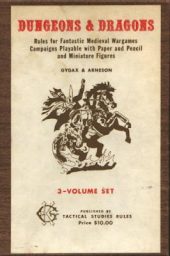 of original Dungeons & Dragons and I plan to devote quite a bit of commentary to the game that started it all throughout the year. Though I am not presently playing OD&D, I have a particular affection for this edition of D&D, because it’s the one that served as my gateway to what would eventually come to be known as the Old School Renaissance.
of original Dungeons & Dragons and I plan to devote quite a bit of commentary to the game that started it all throughout the year. Though I am not presently playing OD&D, I have a particular affection for this edition of D&D, because it’s the one that served as my gateway to what would eventually come to be known as the Old School Renaissance.
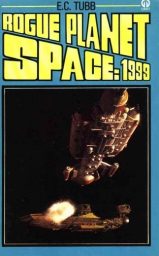 Fiction (Vintage Pop Fictions): E.C. Tubb’s Rogue Planet, the ninth of the Space: 1999 TV tie-in novels, published in 1977. It is an original novel, not a novelisation of episodes from the TV series. It’s based on Year One of the TV series. It captures the feel of the TV series extremely well.
Fiction (Vintage Pop Fictions): E.C. Tubb’s Rogue Planet, the ninth of the Space: 1999 TV tie-in novels, published in 1977. It is an original novel, not a novelisation of episodes from the TV series. It’s based on Year One of the TV series. It captures the feel of the TV series extremely well.
Fiction (Book Graveyard): A Fire Marshal Pedley mystery. I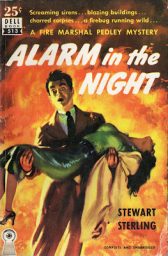 love a good crime mystery and was completely intrigued by a fire marshal protagonist. What’s interesting about the author is he wrote other fringe investigation centered plots including the New York Harbor Police and a department store detective. I’m a sucker for off the beaten path ideas and would love to get my hands on some of these.
love a good crime mystery and was completely intrigued by a fire marshal protagonist. What’s interesting about the author is he wrote other fringe investigation centered plots including the New York Harbor Police and a department store detective. I’m a sucker for off the beaten path ideas and would love to get my hands on some of these.
Cinema/Tolkien (Grumpy Wizard): It’s been 20 years since the release of The Return of the King. Like a lot of fans, I have recently commemorated the event by re-watching all three films of the Lord of the Rings. As a work of cinema art in the genre of epic fantasy, they were an achievement that no one has come close to matching.
Tolkien (Cosmic Faust): Two of the most influential authors of the twentieth century were J.R.R. Tolkien and Frank Herbert. These two men came to define two different but popular literary genres. Tolkien’s magnum opus trilogy, The Lord of the Rings, released between 1954-1955, became the foundation of nearly all modern fantasy, while Frank Herbert’s magnum opus, DUNE, released in 1965, became an extremely influential foundational work within science fiction.
Comic Books (Bounding Into Comics): I’ve made no secret of my anticipation for the release of Alphacore #1 by Chuck Dixon and Joe Bennett, brought to us as the first non-Eric July-scribed title from the Rippaverse. The book has certainly delivered on sales expectations. As of this writing, Alphacore #1 has sold over 12,000 books, marking the third book in a row from the Rippaverse to surpass $1 million in sales.
anticipation for the release of Alphacore #1 by Chuck Dixon and Joe Bennett, brought to us as the first non-Eric July-scribed title from the Rippaverse. The book has certainly delivered on sales expectations. As of this writing, Alphacore #1 has sold over 12,000 books, marking the third book in a row from the Rippaverse to surpass $1 million in sales.
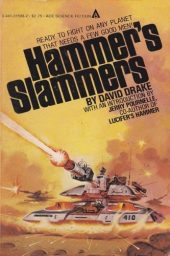 Authors (DMR Books): I read Hammer’s Slammers at a crucial point in my life. I’ve been fascinated by war since I can remember. That was mostly book-learning and TV, but I knew several veterans of World War II, Korea and Vietnam. They had tempered some of my more naive notions about modern mass conflict, but I was still pretty gung-ho on the whole idea. Then I read David Drake.
Authors (DMR Books): I read Hammer’s Slammers at a crucial point in my life. I’ve been fascinated by war since I can remember. That was mostly book-learning and TV, but I knew several veterans of World War II, Korea and Vietnam. They had tempered some of my more naive notions about modern mass conflict, but I was still pretty gung-ho on the whole idea. Then I read David Drake.
Asimov (Benespen): Another interesting discussion was to what degree Foundation is critiquing the idea of psychohistory rather than promoting it. Which is a very interesting question, as the editorial line at WBH is opposed to merely identifying an author’s opinions as being identical to their character’s statements.
Review (Lord Samper Library): Like I said, I’ve been waiting what feels like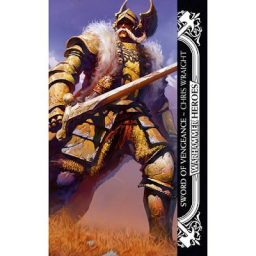 a long time for ‘Sword of Vengeance’ to see the light of day so I could find out how this tale ends. That’s the beauty of the Warhammer setting; things are just unrelentingly grim that the outcome is always in some degree of doubt. There was no way I was putting down once I’d started and I even found myself reading ‘Sword of Vengeance’ with the aid of a tiny reading light very late into the night (something I haven’t done with a book for more years than I want to remember). What? I didn’t want to wake the baby up…
a long time for ‘Sword of Vengeance’ to see the light of day so I could find out how this tale ends. That’s the beauty of the Warhammer setting; things are just unrelentingly grim that the outcome is always in some degree of doubt. There was no way I was putting down once I’d started and I even found myself reading ‘Sword of Vengeance’ with the aid of a tiny reading light very late into the night (something I haven’t done with a book for more years than I want to remember). What? I didn’t want to wake the baby up…
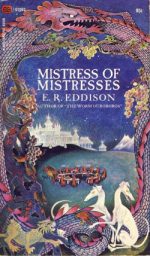 Fantasy (DMR Books): E.R. Eddison is best known for The Worm Ouroboros (hereinafter Worm.) Yet he also wrote a partially completed series compiled in Zimiamvia: A Trilogy, consisting of Mistress of Mistresses, A Fish Dinner in Memison, and The Mezentian Gate. The trilogy is, in a very loose sense, a sequel to Worm. Very loose. A jailbreak of eels loose. So, Zimiamvia, what’s it all about then? An easy question to ask, a hard one to answer.
Fantasy (DMR Books): E.R. Eddison is best known for The Worm Ouroboros (hereinafter Worm.) Yet he also wrote a partially completed series compiled in Zimiamvia: A Trilogy, consisting of Mistress of Mistresses, A Fish Dinner in Memison, and The Mezentian Gate. The trilogy is, in a very loose sense, a sequel to Worm. Very loose. A jailbreak of eels loose. So, Zimiamvia, what’s it all about then? An easy question to ask, a hard one to answer.
Cinema (Isegoria): When I recently revisited H.G. Wells’ The Time Machine and the 1960 movie, I noticed that Max also had Time After Time, a 1979 movie I enjoyed watching on TV as a kid, in which Wells builds a working time machine, which his surgeon friend uses to escape to the future, because he is, in fact, Jack the Ripper. It’s an excellent premise for a Hollywood movie, and Malcolm McDowell does an excellent job playing a Victorian proto-nerd .
Fiction (Fantasy Literature): When famed Scottish mathematician Eric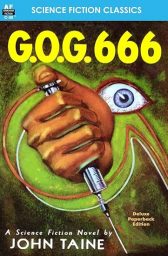 Temple Bell released his first novel, 1924’s The Purple Sapphire, no one could have foreseen that his literary career would extend 30 more years and encompass 15 books of very high-quality science fiction. Looking back on the eight books by Bell that I have read so far – all of them written under his pen name, John Taine – the thing that strikes me first is how very different each one is from the others.
Temple Bell released his first novel, 1924’s The Purple Sapphire, no one could have foreseen that his literary career would extend 30 more years and encompass 15 books of very high-quality science fiction. Looking back on the eight books by Bell that I have read so far – all of them written under his pen name, John Taine – the thing that strikes me first is how very different each one is from the others.
 Art (Pulpfest): One of the leading artists to bring the First World War alive for pulp readers was Frederick Blakeslee. Born on December 4, 1898 in Buffalo, New York, today marks the 125th anniversary of his birth.
Art (Pulpfest): One of the leading artists to bring the First World War alive for pulp readers was Frederick Blakeslee. Born on December 4, 1898 in Buffalo, New York, today marks the 125th anniversary of his birth.
Cinema (Frontier Partisans): The Three Musketeers: D’Artagnan is, at long last, available for streaming (buy/rent East India Co. Amazon Prime). Lady Marilyn and I fired it up like Milady de Winter fires up that exquisite wolf’s head pipe. Concurrent with the streaming release, Part II of this cinematic treatment of Alexandre Dumas’ classic The Three Musketeers: Milady, has just hit theaters in Europe.
last, available for streaming (buy/rent East India Co. Amazon Prime). Lady Marilyn and I fired it up like Milady de Winter fires up that exquisite wolf’s head pipe. Concurrent with the streaming release, Part II of this cinematic treatment of Alexandre Dumas’ classic The Three Musketeers: Milady, has just hit theaters in Europe.
History (Dan Davis History): Sir Francis Drake’s attacks on Spanish ships, towns, and ports in the Caribbean, the Pacific, and on Iberia itself frustrated and terrorised Spanish governors, admirals, King Phillip II himself and even the Pope in Rome. He robbed the Spanish gold and silver from the jungles of Panama, seized laden treasure ships from the Azores to the Pacific and helped save England from the terrifying Spanish Armada.
Please give us your valuable comment